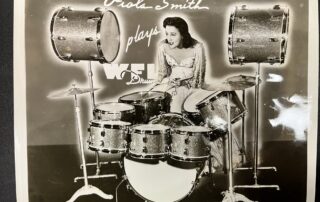Just south of the Door County community of Jacksonport is a two-story garage that is home to two artists with stories all their own.
On the first floor is Wence Martinez, a man who has been weaving since he was a boy.
“It’s in my blood … I can’t get away from it,” Wence said.
Wence grew up in Oaxaca, Mexico, in a family and in a village where most everyone wove.
“I used to watch my dad weave at night,” Wence remembered. “I would sit under the loom and watch his hands weaving, and I always thought, ‘Man, I can’t wait to help him.’ When I got to be nine, I reached the loom and I started weaving.”
As a teenager, Wence studied art in Mexico City, but while other weavers hoped to simply maintain tradition, he wanted to create something new.
“When I was weaving for somebody else, working for somebody else (they) would say ‘I need 50 pieces of this design, or whatever,’” he said. “So I would repeat those a lot. So one of the things I really wanted to do was create my own designs.”
Back in that Door County garage, on the second story, is another artist named Sandra. Like Wence, her interest in art began when she was a child.
“I was an obsessive potter from the age of 14 in Milwaukee, and even before then, there was a sandbox out back, and I would dig through the sand and get to the clay underneath the sand and make stuff out of it and then be a complete mess,” she said.
Sandra stuck with it, studying ceramics in college. As a young woman, though, she began working with pencil, paint and paper.
“I developed these personal drawings that are like primitive drawings,” Sandra said. “They’re very stick-figure-ish. They’re very simple.”
As her career grew, one of Sandra’s friends suggested another new direction.
“I was in Chicago, and my girlfriend from college said, ‘I’ve been to this incredible village where they are incredible weavers, and they can weave anything, and I think your drawings would look really cool as a weaving. So give me one and I’ll take it there,’” Sandra remembered. “So I did. I gave her this little ink painting on some terrible newsprint.”
Days later, that newsprint turned up at Wence’s family business.
“I said, ‘Man, that looks very interesting.’ So, I said, ‘Okay, I’m going to do that,’” Wence said. “So I wove that piece and after we finished it, we shipped it back to the U.S.”
“Six months later, this thing arrives that’s four foot by six foot from this little painting,” Sandra said. “It is so true to the hand-drawn line that I was completely enamored with it … I wanted to meet the weaver who made that piece, and I wanted to do more work and collaborate with that person, because the spirit of him was so evident.”
Sandra saved her money and travelled to Oaxaca and met Wence. The two agreed to collaborate, with Wence weaving 15 of Sandra’s pieces. Sandra returned home, but the two kept in touch through long-distance calls.
“Back then … we didn’t have a phone, there was one phone in the village, a phone office,” Wence said. “So they sent somebody to let you know you got a phone call. Then, an hour later, you go to the phone office and wait for the phone call.”
Despite the challenges of distance and communication, the two built a relationship. Their work and relationship came together in 1988 when the two displayed their work in Chicago’s Field Museum.
“Really, from the moment we met, we felt like we were connected at the hip,” Sandra said.
“When we met, we were just so attracted to each other, and then I came here,” Wence said. “When she was living in Chicago, that’s when we started getting more serious about our relationship.”
“There were definitely people in both of our worlds who were like, ‘Are you sure? You’re so different,’” Sandra said. “But when you get right down to it, what we have in common are the things that are most important.”
Eventually, Wence and Sandra married. They moved to Door County and opened their first studio in an old chicken house. Within a few years, they upgraded to that two-story garage.
Their weavings have gained national attention and have been accepted into the Smithsonian Craft Show in Washington, D.C. For all they’ve learned about design, Wence and Sandra Martinez have learned something else … the art of weaving two stories into one.
“We love it. I don’t think we’d be happy any other way,” Sandra said. “We struggled so hard to be together that, once we’re together, we’re grateful for that. It’s a gift.”










